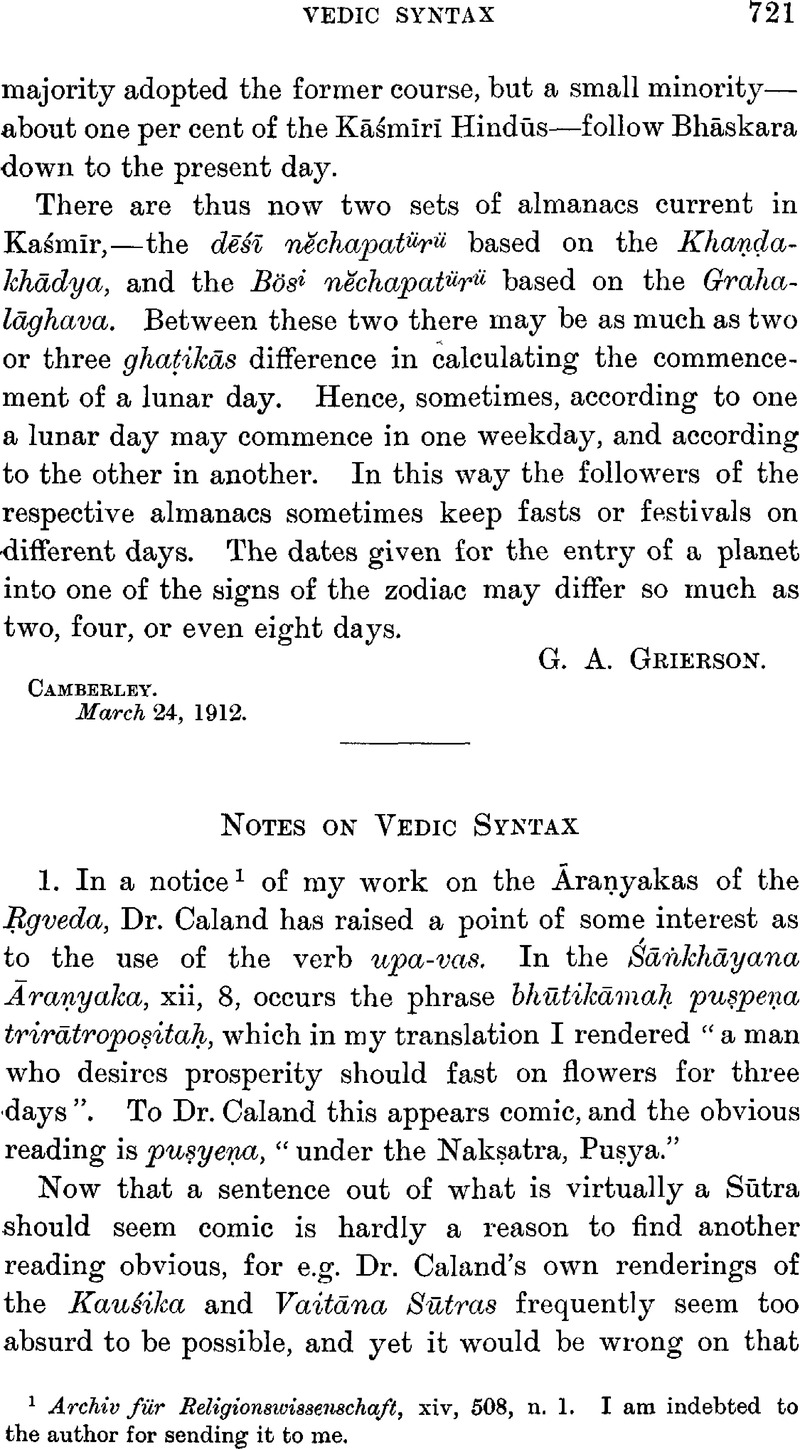No CrossRef data available.
Published online by Cambridge University Press: 15 March 2011

page 721 note 1 Archiv für Religionswissenschaft, xiv, 508, n. 1. I am indebted to the author for sending it to me.
page 722 note 1 See now Bloomfield, GGA. 1912, pp. 1 seqq.
page 722 note 2 See examples in BR. s.v.
page 722 note 3 Delbrück, , Altind. Synt. p. 130Google Scholar.
page 722 note 4 Speyer, , Vedische und Sanskrit-Syntax, p. 13Google Scholar.
page 722 note 5 Böhtlingk, s.v. lc.
page 723 note 1 RV. viii, 48. 10; AV. xiv, 1. 30. Later the word as active seems artificial.
page 723 note 2 Op. cit. pp. 278, 279. Cf. Gildersleeve, , Greek Syntax, § 194Google Scholar.
page 723 note 3 JAOS. xxix, 294, 295. See also my criticism of DrCaland, in JRAS. 1909, p. 753Google Scholar.
page 723 note 4 Op. cit. pp. 502, 503; Synt. Forsch. ii, 129. For English see Kellner, English Syntax, § 368Google Scholar.
page 724 note 1 See also Delbrück, , Vergl. Synt. ii, 261 seqqGoogle Scholar.
page 724 note 2 But hardly so gross as Caland, & Henry's, rendering (L'Agniṣṭoma, p. 305)Google Scholar of the unaccented vāvṛdhe in Taittirīya Saṃhitā, i, 4. 20, as “qui . . . a grandi”. Yáḥ in the first part of the verse has no predicate expressed, but this common ellipsis (Delbrück, , Altind. Synt. p. 11Google Scholar) should not have misled the translators, who cannot be unaware of the rules of the Vedic accent. And what of the rendering at p. 411 of ājyānim in Taittirīya Saṁhitā, iii, 3. 8fas “les beurres” (ājyāni) ?
page 725 note 2 It is quite impracticable to avoid using conventional renderings unless the Sanskrit is always kept, and Dr. Caland himself does so elsewhere. For sadas as properly and originally “seat”, see Sátapatha Brāhmaṇa, iii, 6. 1. 1; sthālīpāka is dealt with in my Aitareya Āraṇyaka p. 254.
page 725 note 2 p. xii. Cf. Wackernagel, , Altind. Gramm. i, 222Google Scholar; Macdonell, Vedic Gramm. p. 45Google Scholar.
page 725 note 3 Indian Literature, p. 50, n. 37.